Korean Pork Stir Fry (Jeyuk Bokkeum)
Jeyuk bokkeum is an extremely popular Korean dish with tons to offer! The thin, crispy pork is tossed in a silky, thick gochujang sauce seasoned with garlic, ginger, and vinegar. With some onions, carrots, and peanuts in the mix and spooned over steaming rice, it’s the perfect meal!
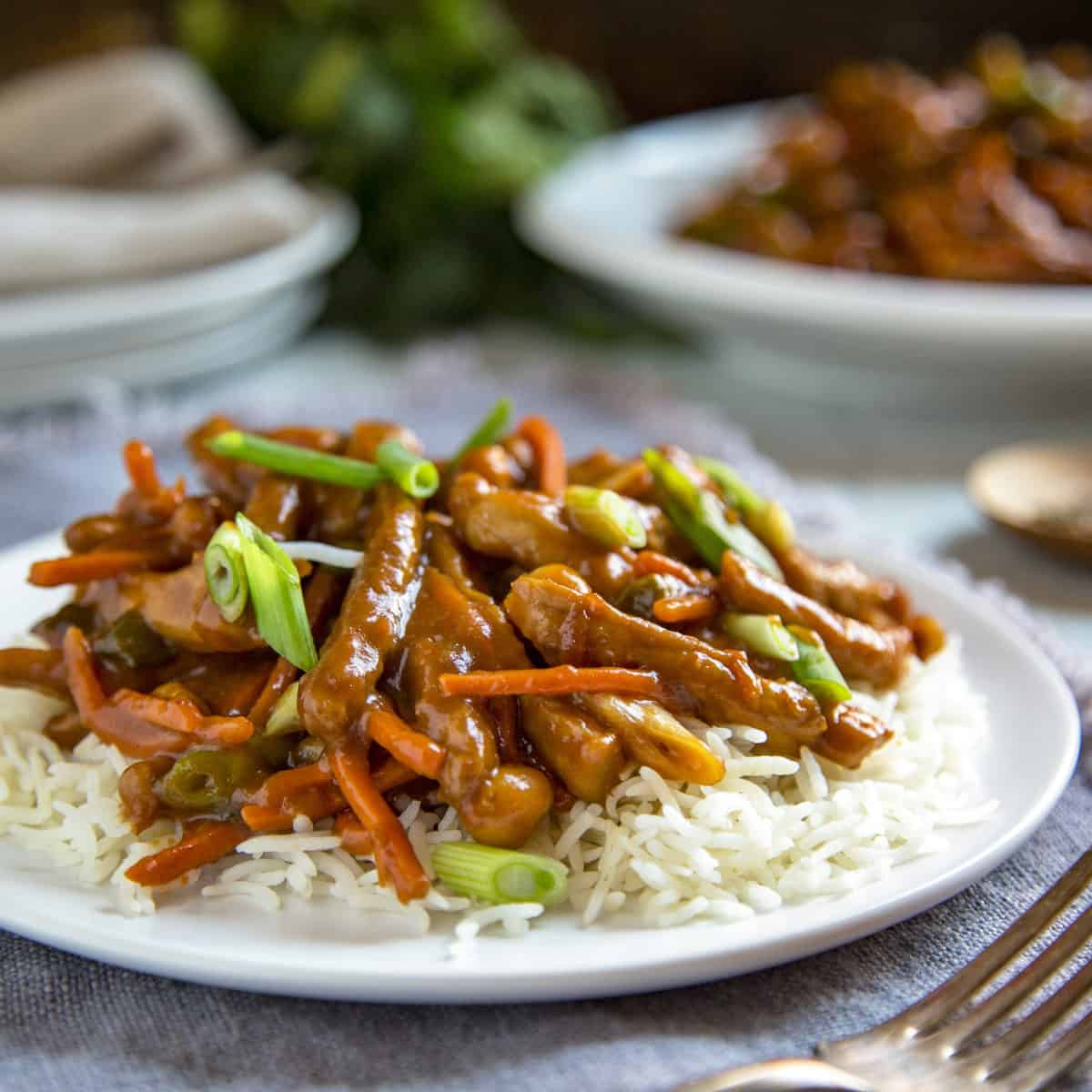
An inexpensive, flavor-packed meal made with pantry-friendly ingredients and in just 20 minutes? It doesn’t get much better than that!
Jeyuk bokkeum, which is Korean for pork stir fry, is all of that and more. It’s a spicy dish that gets its heat from gochujang, sweetness from plum jam, and some much-needed tanginess from a bit of rice wine vinegar.
It’s a little unusual, but I add dry roasted peanuts for a little saltiness and a lot of crunch!
You can use the sauce for protein of all shapes and sizes, not just pork. I tend to use it on almost all of my grilled meats and ribs!
Table of Contents
It’s similar to bulgogi, but spicier… not to mention quicker! If you’d prefer something much milder but with the same Korean flavor, you’ll love galbi jjim — it has more vegetables and sweetness, but just as much tender, melt-in-your-mouth meat.
Jams, jelly and preserves
Jam is made by crushing fruit, including the seeds and pulp. Jelly is made from fruit juice, resulting in a smoother texture without fruit pieces. Preserves contain whole fruit or large pieces, often in a syrup or gel. The main difference lies in the fruit’s form and texture within the spread. For this recipe I typically use Smucker’s red plum jam, but any of these will work.

- Pork – Any cut of boneless pork is suitable for this jeyuk bokkeum recipe, such as pork tenderloin, shoulder, or loin chops — my preferred cut! You can even use pork belly if you’d like.
- Cornstarch & Soy Sauce – A quick toss in soy sauce and cornstarch helps the pork fry up extra crispy and delicious!
- Vegetables – I stir-fry the pork with green onions and carrots. Some other common vegetables in Korean pork stir fry include cabbage, scallions, and hot peppers like jalapeno.
- Dry Roasted Peanuts – Feel free to substitute with toasted sesame seeds or omit entirely.
- Stir-Fry Sauce – For a thick, luscious jeyuk bokkeum stir-fry sauce, combine cornstarch, soy sauce, minced garlic, ginger paste, and:
- Plum Jam – To get that characteristic Korean sweetness, use a bit of fruit jam. I like to use Smucker’s red plum jam.
- Gochujang Paste – This fermented red pepper paste is considerably spicy — proceed with caution if using extra in this jeyuk bokkeum recipe!
- Hoisin – A very thick, salty, and umami sauce. Substitutes include oyster, teriyaki, or chili sauce.
- Rice Wine Vinegar – A bit of vinegar makes the sauce brighter and more acidic. Substitute with apple cider vinegar if needed.
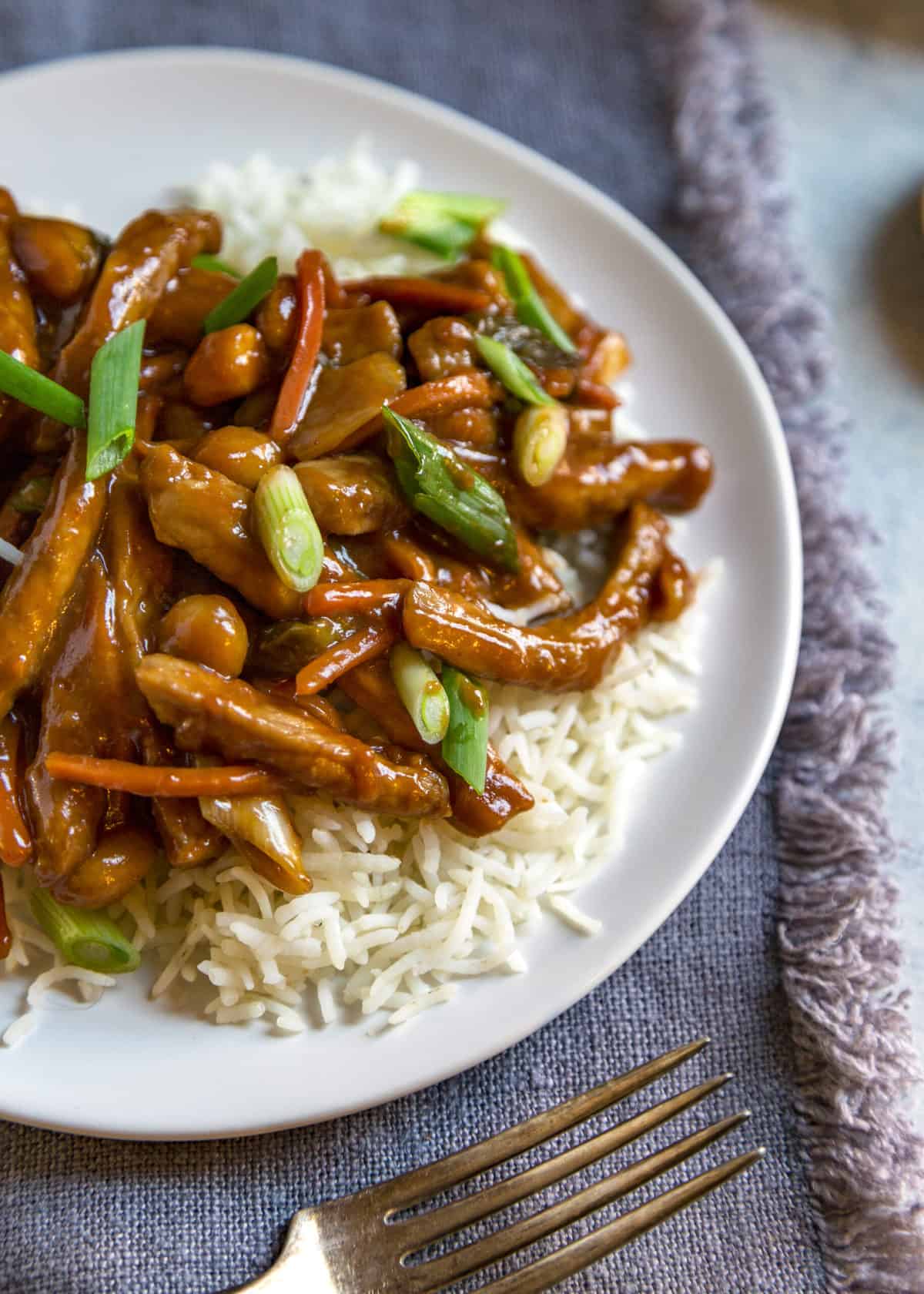
- Make the Sauce. Whisk together the vinegar and 2 tbsp of cornstarch in a small dish. In a larger bowl, combine the rest of the stir-fry sauce ingredients. Whisk the cornstarch slurry in with the sauce and set aside.
- Coat the Pork. Toss the sliced pork in the remaining cornstarch and soy sauce and let sit for 5 minutes.
- Brown the Pork. Heat the oil in a wok or skillet over high heat. Once the oil is hot, add the pork and stir-fry to quickly brown on all sides.
- Stir-Fry the Vegetables & Peanuts. Add the vegetables to the wok and cook for 3 minutes until tender. Add the peanuts and sauce. Stir-fry for 3 more minutes as the sauce thickens.
- Serve. Plate right away as-is or with freshly steamed white rice, topped with more peanuts and onions as desired.
Recommended Tools
- Wok – There’s no better pan for stir-frying than a wok, especially with high heat and with a lot of ingredients. A good cast iron skillet works well, too — just make sure it’s big enough!
Storing and Reheating
Leftover Korean pork stir fry can be refrigerated for up to 4 days.
And it’s very freezer-friendly! Portion any leftovers into freezer-safe plastic baggies and store for up to 4 months. Let thaw in the fridge overnight before reheating.
Return to your wok or skillet to reheat. Set the temperature to medium and stir until the sauce thins out and everything warms through.
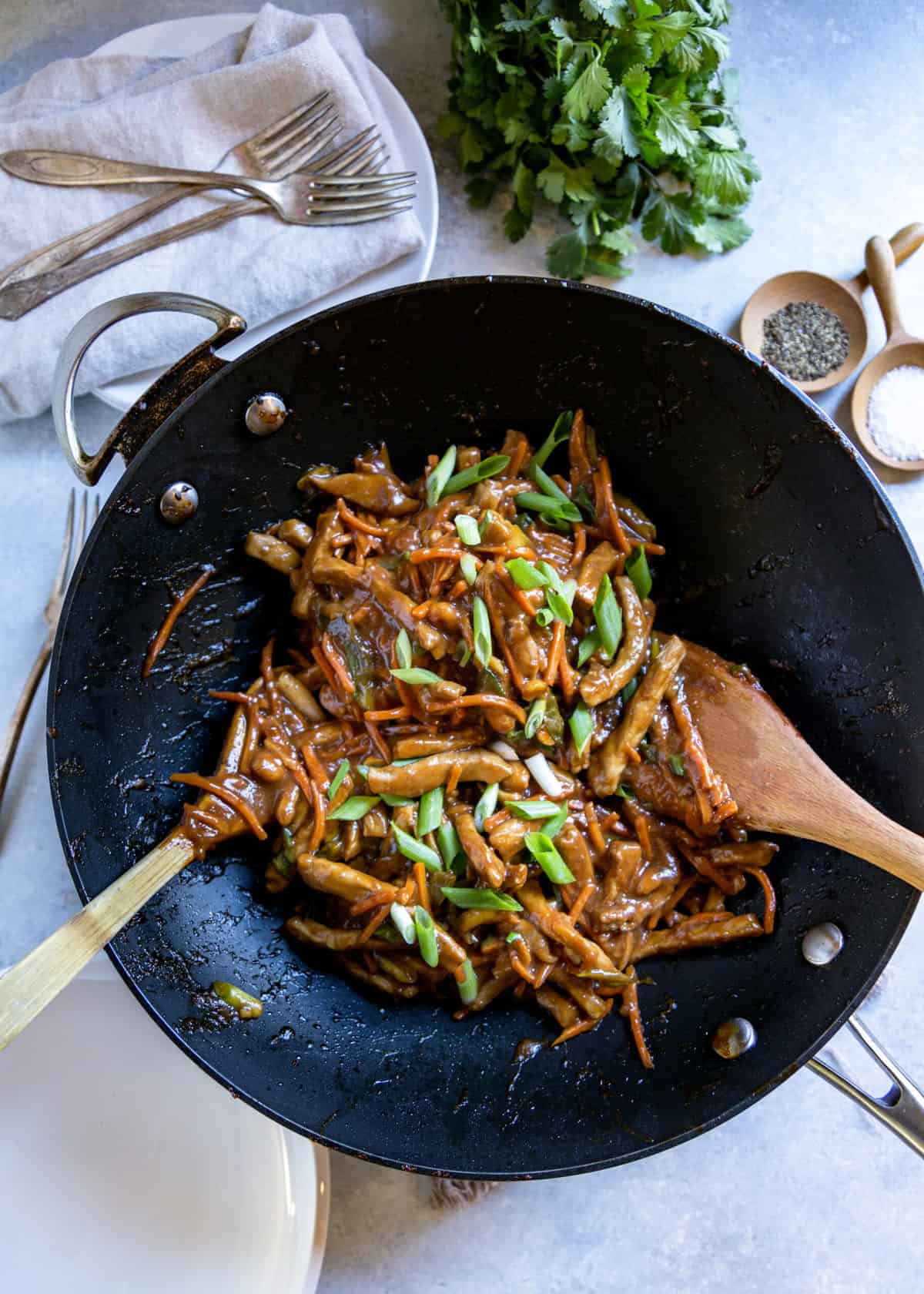
Yes, but only slightly. Pork bulgogi is marinated, whereas jeyuk bokkeum is not. Otherwise, your average jeyuk bokkeum recipe contains more vegetables than bulgogi — but not always.
And if you order jeyuk at a Korean restaurant, rather than bulgogi, you’re more likely to get a spicy hot meal! Compare the ingredients to those in my bulgogi sauce to get a better idea of the difference.
It’s pretty spicy. Gochujang varies in spiciness, depending on the brand — you won’t know how hot one is until you try it! But it will always have at least medium heat.
To make your jeyuk bokkeum less spicy, just use a bit less gochujang. To make the sauce thicker, compensate with a little more hoisin.
You can. The cornstarch coating isn’t so effective as a marinade that it can’t be kept on the pork for too long — lucky us! Feel free to toss the meat in the cornstarch and soy sauce up to 24 hours in advance.
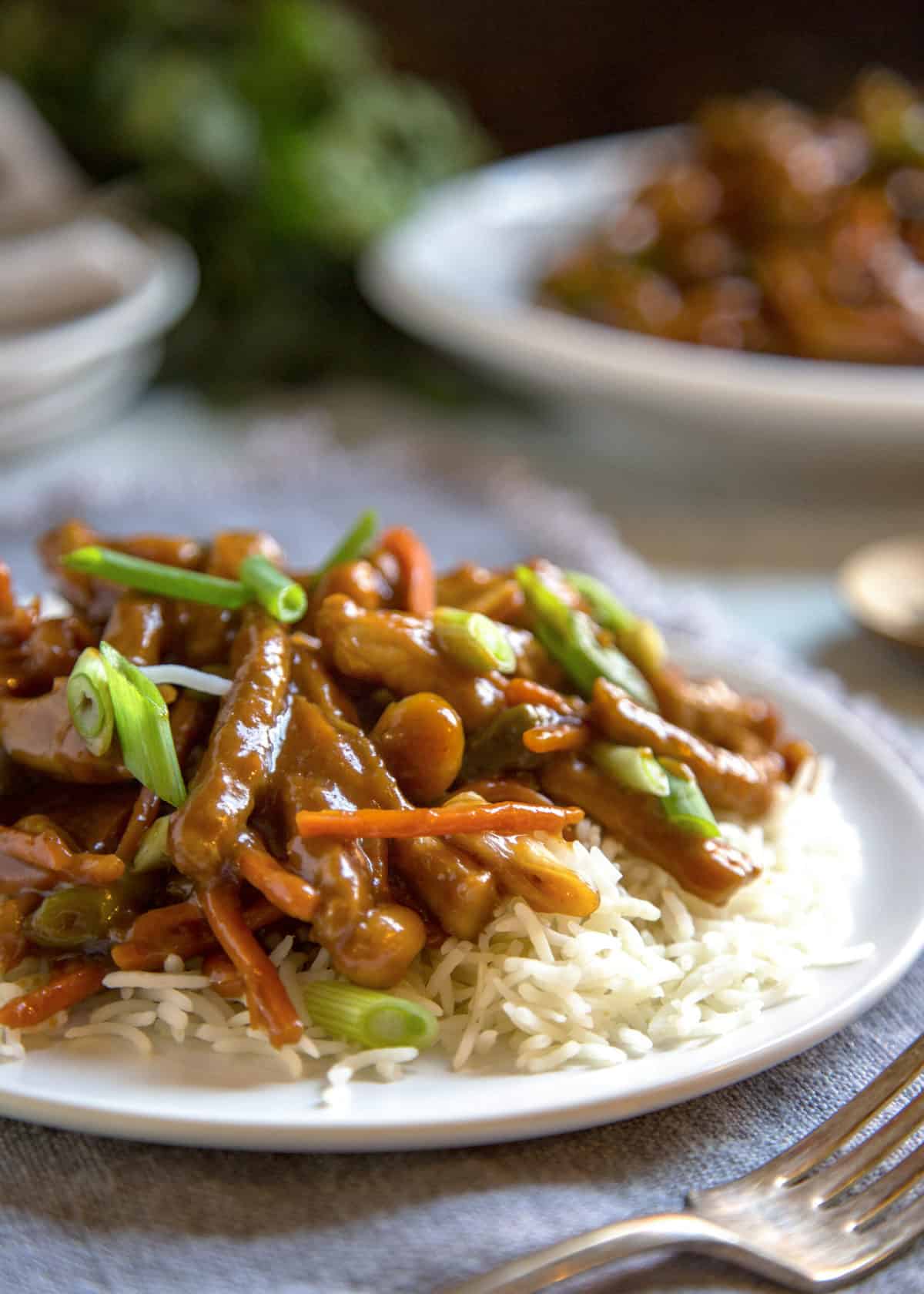
Share this recipe on Pinterest!
Love this recipe? Share it with the world on Pinterest.
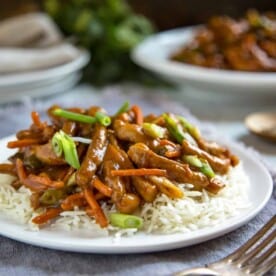
Korean Pork Stir Fry (Jeyuk Bokkeum)
Ingredients
Sauce
- 1/4 cup plum jam See Note 1
- 1/4 cup hoisin sauce
- 1/4 cup gochujang paste
- 3 tbsp soy sauce low sodium, if desired
- 1 tbsp ginger paste
- 3 cloves garlic minced
- 2 tbsp cornstarch
- 1/4 cup rice wine vinegar
Pork Stir Fry
- 1.5 lb boneless pork loin chops cut into 1/4” strips (See Note 2)
- 1 tbsp cornstarch
- 1 tbsp soy sauce low sodium, if desired
- 6 green onions sliced on diagonal into 1-inch pieces
- 2 carrots julienned into strips
- 1/2 cup dry roasted peanuts
Instructions
Sauce
- To a medium sized bowl, add plum jam, hoisin, gochujang, soy sauce, ginger and garlic. In a separate small cup or dish, mix together the vinegar and cornstarch to make a slurry, then whisk it into the jam mixture. Set aside.
Pork
- Slice the pork into 1/4” strips and toss with tablespoon of cornstarch and soy sauce in a bowl. Set aside for 5 minutes.
Cook
- Over high heat, add oil to the wok or skillet and wait a minute for it to get hot. Add pork and toss to cook, stirring to quickly brown on all sides.
- Add the vegetables and cook for 3 minutes, or until tender.
- Add the stir fry sauce and peanuts; Cook for 3 more minutes, stirring frequently, as sauce will thicken.
- Serve as is, or over steamed jasmine rice. Garnish with more peanuts and sliced green onions if desired.
Notes
- I use Smucker’s red plum jam.
- Any cut of boneless pork may be substituted for boneless pork loin chops, such as pork tenderloin or pork shoulder. Or, feel free to use pork belly if you’d like.
Nutrition
The information shown is an estimate provided by an online nutrition calculator. It should not be considered a substitute for a professional nutritionist’s advice.
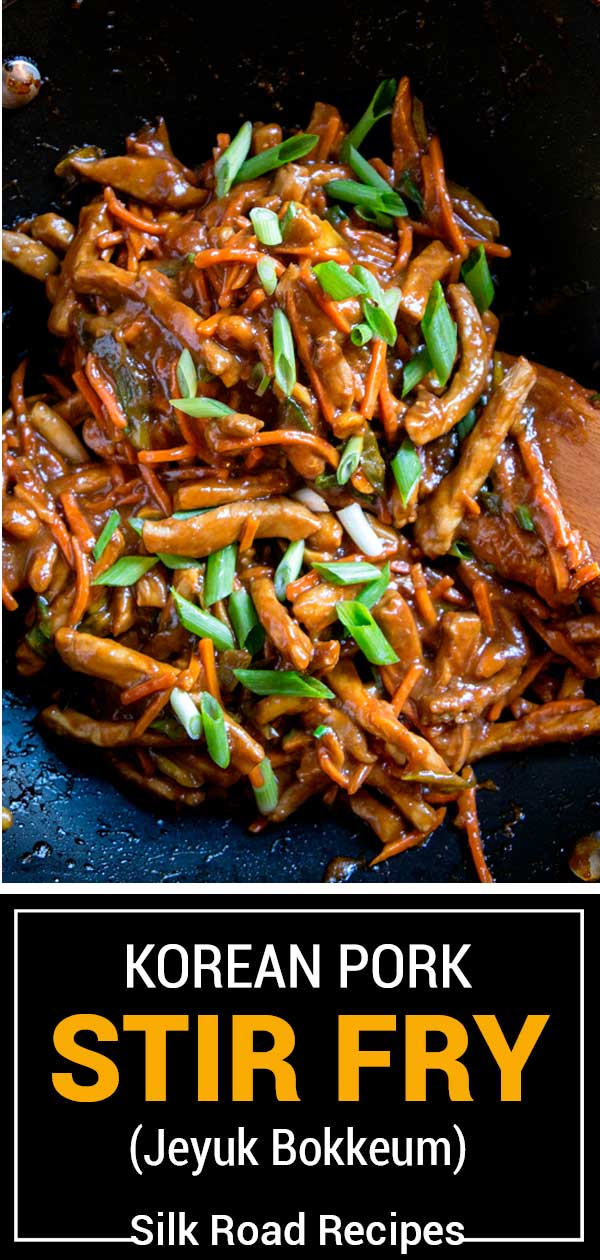

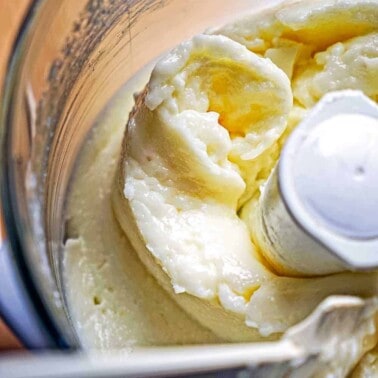
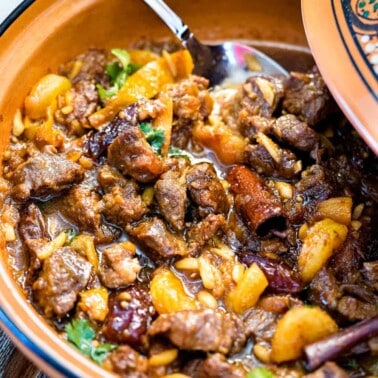
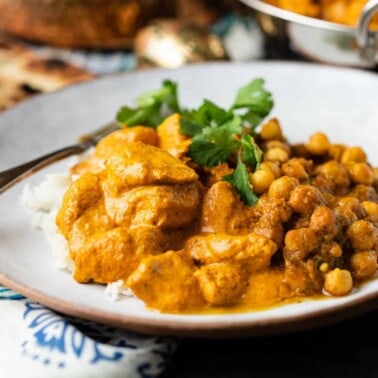
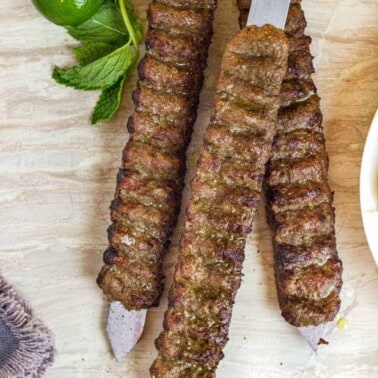








what’s the subscription for the Korean goyucjang sauce?. what’s is it anyway? thanks
Gochujang is an essential ingredient in Korean cooking. It is a thick, deep red paste made from red chile pepper flakes, glutinous rice (sticky rice), fermented soybeans, and salt. Found in most Asian markets in a red plastic tub.
me encantan las recetas , ya he cocinado varias y a mi familia les gusta mucho . Gracias por enseñarme .
Gracias Guillermo!
This recipe looks great! Im just wondering if I can use already cooked pork loin. I smoked one this weekend and have a bunch left over and wondering if I can use it instead of starting with raw pork?
I would give it a go, I see no issue Tyler. Smoked pork loin would be fantastic!
Mike is right be careful adding the sauce I don’t think you need all of it.
Thanks for trying this one and to each their own, right? I love the sauce with plenty to go over rice myself. Cheers!
Excellent dish! I fell in love with Asian food when I was serving in the USAF in various parts of Asia and back then there were very few true Asian restaurants in the locations where I lived so I had to learn to cook the food.
That said, everything I needed for this recipe was in the pantry, refrigerator or freezer so putting it together was a snap. I only used two boneless pork chops (approx. 0.75lbs) and cut everything else in half but maintained the ratios.
Even with only one half of the sauce I barely used half of it. Also, my wife doesn’t like peanuts in her dishes so I lightly fried them before I added the vegetables, removed them and mixed them with my helping after everything was done.
This dish reminded very much of the tastes I remember from Korea.
Thanks again! Great recipe.
Thanks for your feedback, Mike. I love your idea of frying the peanuts. I’ll have to try that next time!
All I can say is unbelievable. So so good, this is my new favorite stir fry.